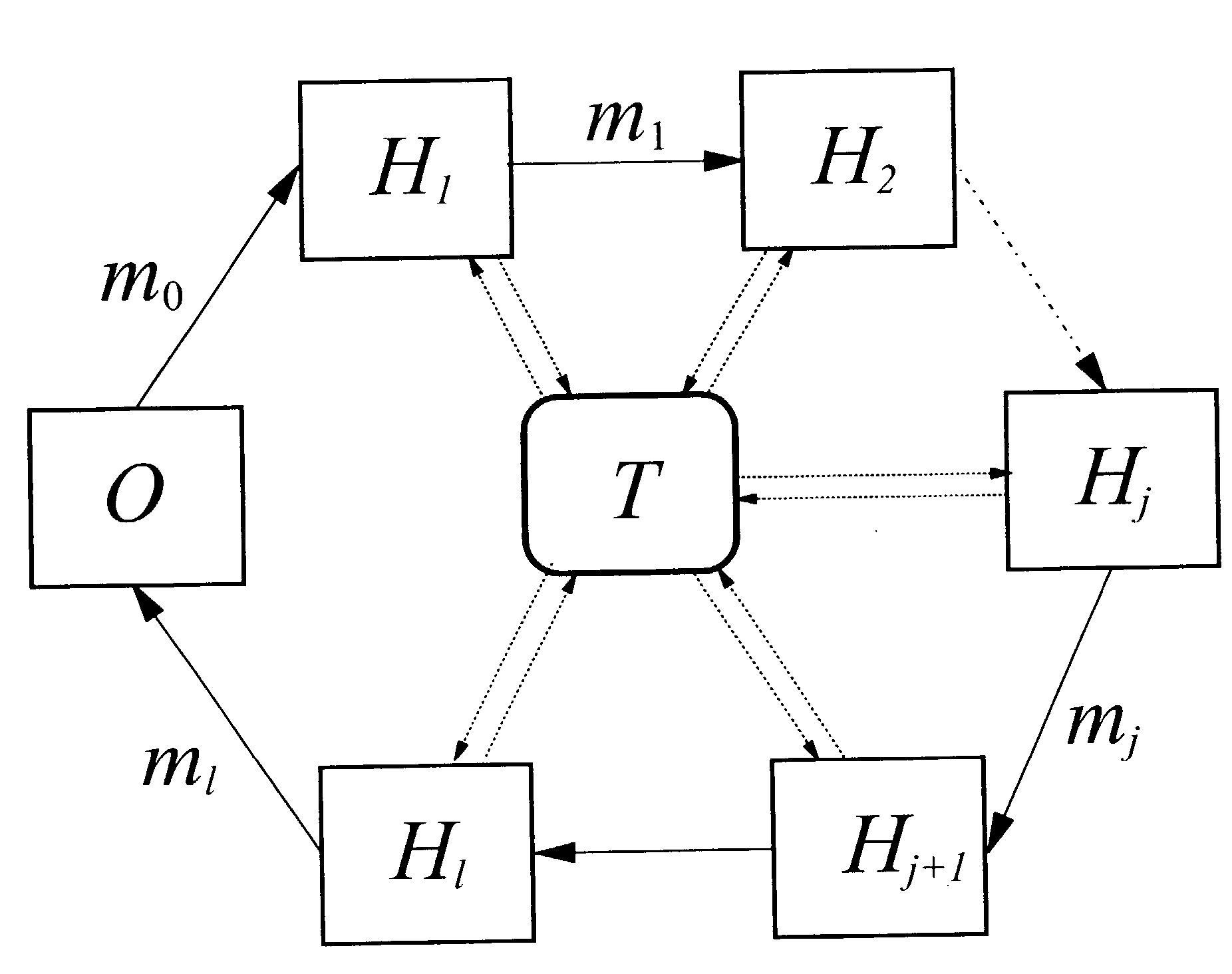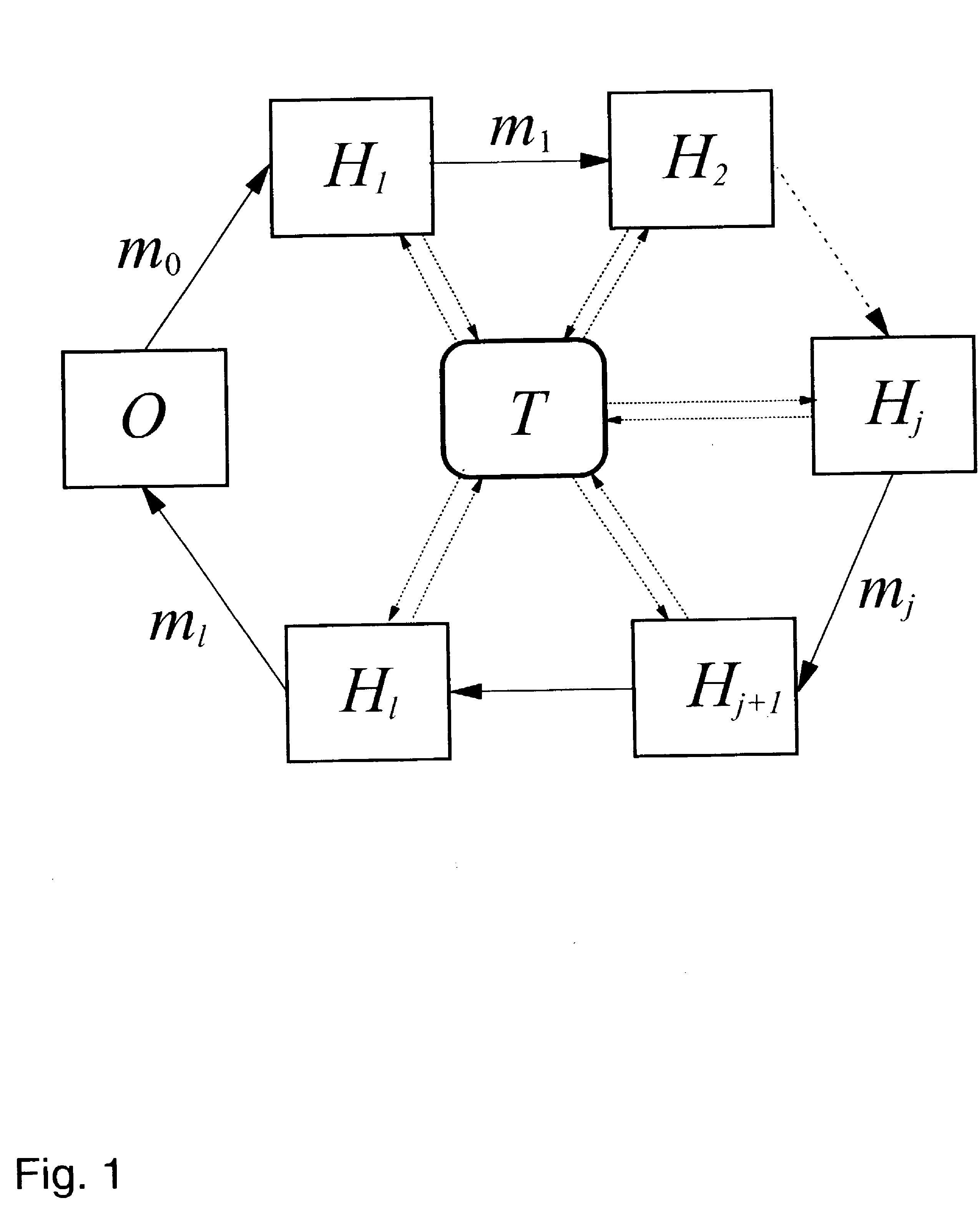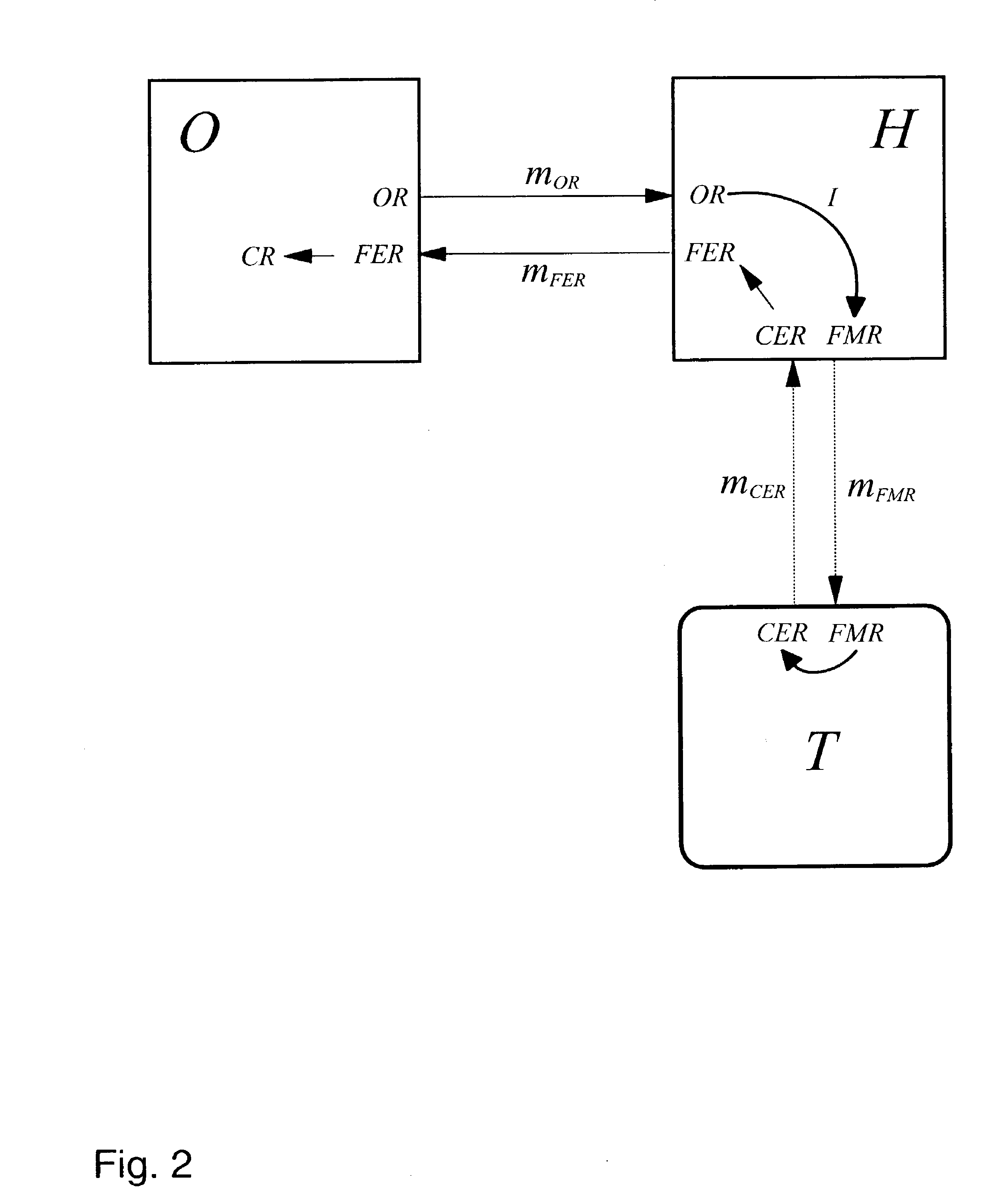Method and system for processing a request of a customer
a customer request and processing method technology, applied in the field of secure processing of customer requests, can solve the problems of inapplicability to achieve secrecy of mobile application output integrity, malicious host, and large attention, and achieve the effect of less expensive construction and operation and advantageously ensuring integrity for mobile agents
- Summary
- Abstract
- Description
- Claims
- Application Information
AI Technical Summary
Benefits of technology
Problems solved by technology
Method used
Image
Examples
Embodiment Construction
[0027]With general reference to the figures the features of a method and system for processing a request of a customer using cryptographic functions is described in more detail below. When referring to the word customer, it appears obvious that a device, such as a computer or mobile appliance, used by the customer is meant.
[0028]A defining element of a mobile code or agent computation is that it proceeds autonomously and independently of the originator of the code. The secure mobile agent computation is modeled in principle as depicted in FIG. 1, whereby the boxes are labeled according to the description below.
[0029]There are a code originator CO, and l hosts, hereinafter referred to as entities H1, . . . , Hl, on which the mobile agent, hereinafter short agent, runs.
[0030]FIG. 1 shows a network, such as the Internet, whereby the code originator CO is connected to a first entity H1, that is further connected to a second entity H2. The second entity H2 is connected to an entity label...
PUM
 Login to View More
Login to View More Abstract
Description
Claims
Application Information
 Login to View More
Login to View More - R&D
- Intellectual Property
- Life Sciences
- Materials
- Tech Scout
- Unparalleled Data Quality
- Higher Quality Content
- 60% Fewer Hallucinations
Browse by: Latest US Patents, China's latest patents, Technical Efficacy Thesaurus, Application Domain, Technology Topic, Popular Technical Reports.
© 2025 PatSnap. All rights reserved.Legal|Privacy policy|Modern Slavery Act Transparency Statement|Sitemap|About US| Contact US: help@patsnap.com



